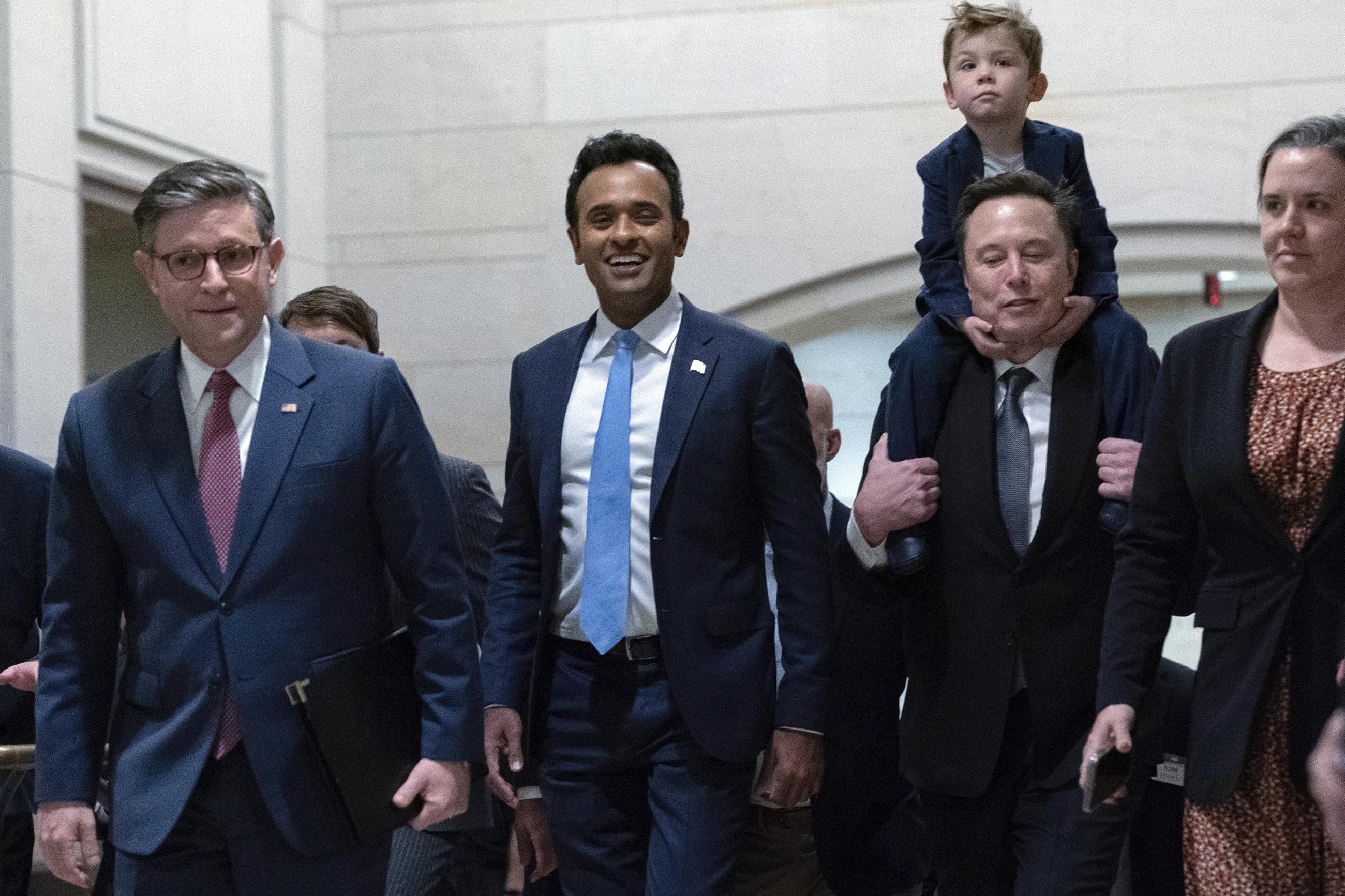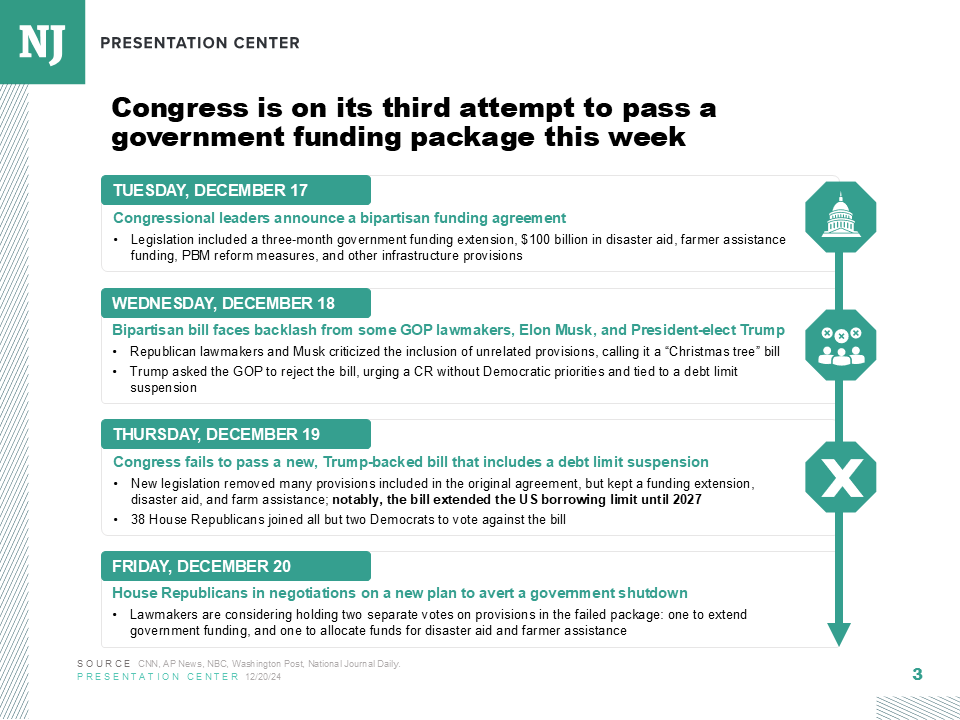Republicans are offering different remedies on funding the Health and Human Services Department and its MAHA agenda.
House Republicans advanced a funding measure Tuesday night that would enact deep cuts to the Centers for Disease Control and Prevention, while maintaining the budget for the National Institutes of Health—setting up a potential conflict with the Trump administration and the Senate.
The House Labor, Health and Human Services, Education, and Related Agencies Appropriations Subcommittee voted on a party-line basis to advance a measure appropriating $108 billion in discretionary funding for HHS—6 percent below the current funding level, and lower than the Senate’s proposed amount, but about 14 percent higher than the Trump administration’s request. The House bill would slash the CDC’s budget by 19 percent—whereas the Senate’s version gives a slight boost to that agency—while at the same time disregarding the administration’s request to cut NIH funding by 40 percent, instead providing a slight boost, mirroring the upper chamber’s move to increase support for the agency.
The House measure is expected to be considered by the full Appropriations Committee next week. While it falls short of the deeper NIH cuts requested by the White House, it aligns with the Senate by largely ignoring the request from HHS Secretary Robert F. Kennedy Jr. to consolidate and eliminate programs within the department. HHS would need congressional approval before any major reorganization.
“The bill provides appropriate and fiscally responsible funding to ensure these departments can continue to perform their core missions while also safeguarding American taxpayer dollars,” House Appropriations Chair Tom Cole said in his opening remarks. “It supports rural hospitals, public health programs, and robust funding for biomedical research.”
An HHS spokesperson did not immediately respond to a request for comment.
While a few Democrats acknowledged that the bill does not give way completely to the administration’s wishes, appropriators from the minority party slammed Republicans on procedural merits. They criticized the panel for not allowing amendments on Tuesday’s brief markup and for a lack of sufficient hearings to explore the impacts of cutting the federal workforce.
“You’d be surprised if I didn’t make the observation that this is not a markup,” senior appropriator Steny Hoyer said during the hearing. “No amendments are going to be offered. No issues will be thoroughly discussed by both sides as to the merits of the proposal. It will be a little like [the Department of Government Efficiency]: We’ll know how to cut, we will not know the consequences of those cuts.”
Amendments are expected to be offered at the full committee markup next week.
House bill versus Senate measure
Much like the Senate version, the House bill snubs Kennedy’s request to consolidate programs dealing with chronic disease into a single new agency, dubbed the Administration for a Healthy America. The measure largely funds the different agencies as they currently stand.
Still, the House bill does provide $100 million for Kennedy’s Make America Healthy Again initiative, allowing the HHS secretary to invest in prevention and innovation programs for rural communities, telehealth resources for chronic care, and nutrition services.
The House bill would cut $1.7 billion from the CDC, setting the topline for the agency at $7.4 billion. The Senate version has a higher topline of roughly $9.2 billion, which is slightly lower than the current funding level.
The lower chamber’s version would fund the NIH at $48 billion for the next fiscal year, in line with the Senate’s effort to keep funding intact. (In fact, the Senate version provides an increase of roughly $300 million.)
The House measure, however, would eliminate the Agency for Healthcare Research and Quality, which the subcommittee in its announcement called “duplicative.” The Senate provides $345 million for AHRQ, which provides research into health services, aiming to improve their quality and effectiveness. Kennedy has proposed consolidating the agency into a new Office of Strategy.
The House bill also makes cuts to the Advanced Research Projects Agency for Health, with a topline of $945 million for ARPA-H, while the Senate bill allocates $1.5 billion.
The House bill does make way for the administration to cap indirect costs, which are payments on research overhead. The bill caps indirect costs at 30 percent of federal grants, which would apply to private universities and colleges with large endowments and which meet other criteria.
The administration has argued that such a cap will allow more money to be spent on direct research activities, while critics have argued it will undermine critical research infrastructure. A federal judge blocked the administration’s proposed 15 percent cap for NIH in March.
Some Democrats slammed the bill for codifying into law a number of Trump’s executive orders that go after diversity and inclusion language, and that rescind protections for LGBTQ+ individuals.
“I’m truly exasperated that the majority has taken this subcommittee, the Congress, and the American people down this path,” said ranking member Rosa DeLauro. “This 2026 Labor, Health, and Human Services and Education bill only deepens the harm wrought on the middle class, the working class, and vulnerable Americans.”
Hoyer argued that the bill before the panel has little weight if the Trump administration plans to continue to enact pocket rescissions, circumventing Congress’s power of the purse.
“We ought to adjourn right now and not pretend that we’re making decisions that make a difference—unless we assert our authority,” he said.
The Senate Appropriations Committee has approved its version of the Labor-HHS-Education bill, and the measure now awaits passage on the floor. Still, neither the House version nor the Senate version is final, as lawmakers from both chambers will need to reconcile the differences through a conference bill.










